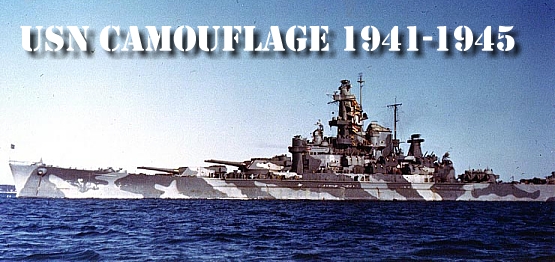The
Development of Naval Camouflage
1914 – 1945
Part I
By
Alan Raven
(Article
reprinted courtesy of Plastic Ship
Modeler Magazine issue #96/3)
opposite
course.
It was not until she was within one half
mile that I could make out that she was one ship steering a course at right
angles, crossing from starboard to port. The
dark painted stripes on her after part made her stern appear her bow, and a
broad cut of green paint amidships looked like a patch of water, the weather was
bright and visibility good; this was the best camouflage I have ever seen”.
HMY SAYONARA
October 1917
“9:55 am, sighted HMS EBRO in the sound of Mull on the port bow, end
on.
She appeared to alter course to port
immediately after and seemed to continue to do so, whereas in reality, she was
altering her course to starboard.
I should think confusion would be caused in
aiming gun or torpedo.
I was so sure that she was trying to cross
my bows that I was on the point of stopping my engines and going full astern to
avoid a collision, when I discovered that she was altering course to starboard. After passing the vessel it was almost impossible to tell how
she was steering”.
HMS MISCHIEF
October 1917
“Sir, - I desire to bring to your notice the following facts: - At
about 9:30 am on Wednesday, October 17th, whilst proceeding up the
Firth of Clyde in HMS MISCHIEF, I observed a convoy of eight ships, oilers etc,
proceeding to the sea in a single line ahead.
No. 6 in the line was dazzle painted, and appeared to me to be steering
at least pointsdifferent to the other ships in the line. So remarkable was this optical illusion that I sent for all
of my officers and asked their opinion as to the course of the ship.
Not one officer agreed within four points.
This optical illusion remained until the ship in question was past our
beam, when it was seen that she was steering the same course as the others”.
SNO ARDROSSAN
September 1917
Vessels unknown.
“In all cases, more especially when viewed
at a distance of about three miles, the vessels presented an appearance of being
grotesquely out of all proportion; infinitely more so when the sun shone
directly upon them. When
approaching, it was not until the vessels were quite near that it was impossible
to see their bows, even when quite close; atabout a mile the bows seemed to be
directly under the bridge. The
deception as to distance between bows and bridge, which in all cases appeared
extremely high, was indeed remarkable.”
HMT ANZAC
August 1917
“Convoy was observed by three destroyer officers running trials at
distances varying between two to four miles.
All three officers agreed that the dazzle
painting of HMS MILLAIS was a huge
success. They state that it was
quite impossible to state her course, even approximately, except when the sun
lit up her masts. Lieut’ CommanderHarrison stated that he could not tell her
course within 12 points”.
HMS MANTUA
“The dazzle scheme on the starboard of SS ASCANIUS is excellent.
The ship sometimes appears to be going in the opposite direction, and in
misty weather her course cannot be judged within 8 points.
On a bright moonlit night she was invisible at one mile. I am strongly of the opinion that all ships should be painted
on these lines”.
The above
reports leave no doubt as to Dazzle’s ability to cause confusion, and by early
1918 almost every British merchant vessel of ocean going type was so painted.
But by the end of the war in November 1918, after an analysis of ship losses due
to submarine torpedo attack, the Admiralty came to the
following conclusion, one that held until well into WWII.
“It must be remembered that the sole object of dazzle painting is to
cause confusion as to the course and speed of a vessel, and that it is not
designed to reduce visibility: in our opinion, from a careful examination of the
whole of the evidence, no definitive case on material grounds can be made out
for any benefit in this respect from this form of camouflage.
At the same time the statistics do not prove
that it is disadvantageous, and in view of the undoubted increase in the
confidence and morale of officers and crews of the mercantile marine resulting
from the painting which is a highly important consideration, together with the
small extra cost per ship, it may be found advisable to continue the system,
though probably not under the present wholesale condition”.
This opinion
by the Admiralty was in contrast to that of the American navy who had no doubt
as to its value as an anti-submarine measure as the following quote shows.
“It is considered beyond doubt however, that camouflage painting was of
distinct value, particularly in the case of large and fast vessels, which might
be saved from disaster by the momentary confusion of the attacking submarine
commander”.
The above two
quotes illustrate the difficulty in placing value upon the use of such methods
of deception. Whatever the official
British opinion at the end of thee war, the government made a handsome monetary
award to Norman Wilkinson for his contribution to the war effort.
Page 5
[ Back Page ] [ Home ] [ Table of Contents ] [ Next Page ]
| 